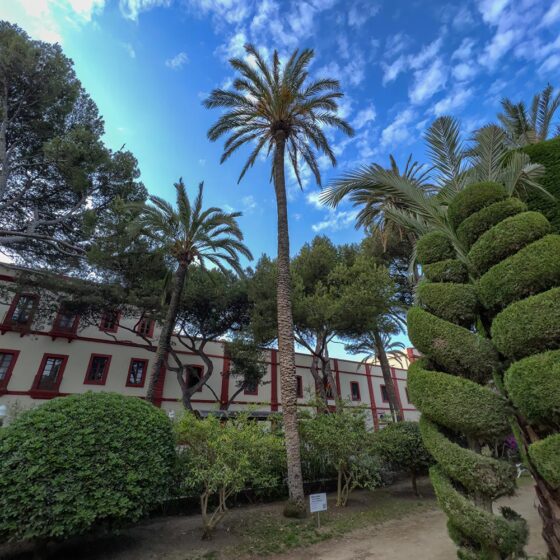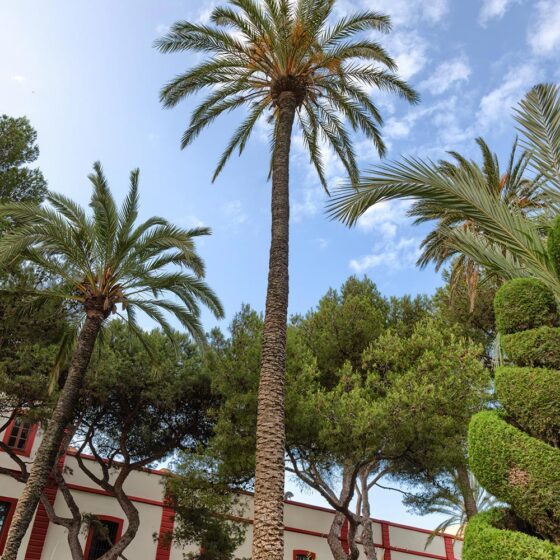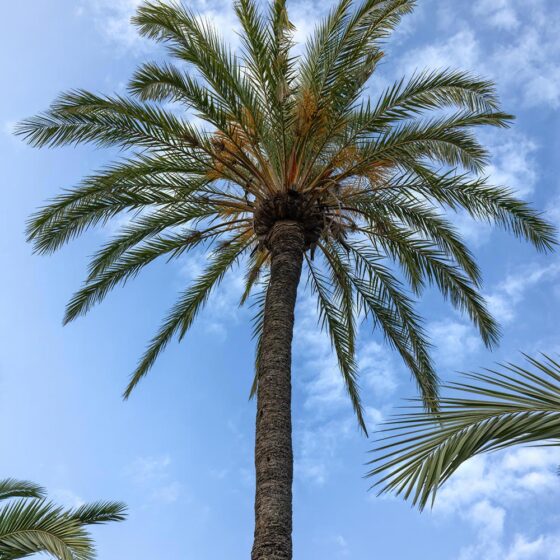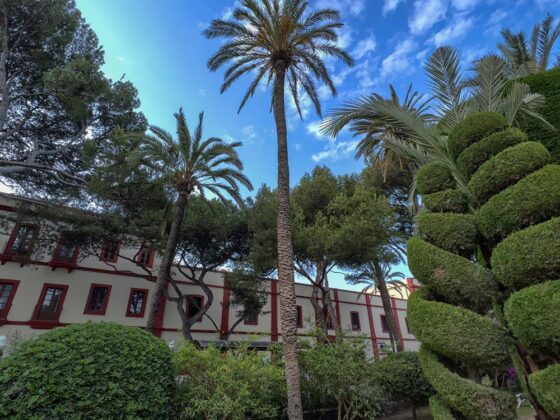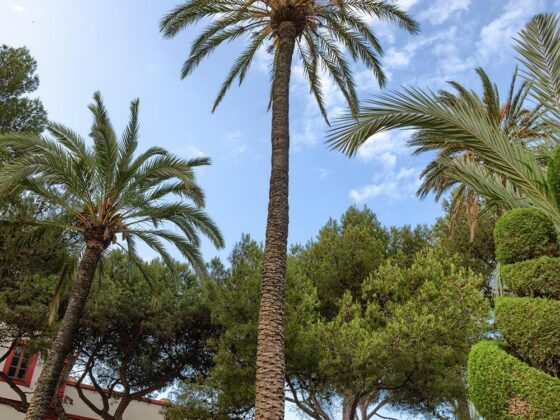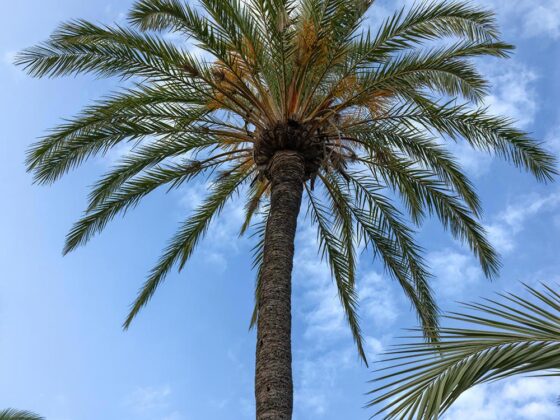Date Palm
Phoenix dactylifera
The generic name Phoenix, which in Greek means purple red, was given to the date palm by the colour of the fruit, and the specific name, dactylifera, (from the Greek dactylos, finger, date) and (fero = i porto), meaning date carrier, by the shape of the fruit.
The name Phoenicius derives from Phoenix and was given by the Greeks to the Canaanite people who settled on the coasts of present-day Lebanon, before spreading through the Mediterranean, because they dyed their robes in the purple red colour, with dyes extracted from a mollusc (murex). Perhaps they were the first to make these trees known to the Greeks in Phoenicia, and that the palms received the same name. According to other authors, the leaves of the palm tree are reminiscent of the feathers of the mythological phoenix, which curiously has purple-red coloured wings.
It is a palm tree with straight stipe, rarely branched, covered at the base with dead leaves. At its apex, you can find a lot of live leaves, measuring 3 to 6 metres long, greenish-grey in colour, pinnate and with lanceolate, rigid and somewhat curved leaflets. It produces small, white and fragrant flowers, in clusters enclosed in a spathe. Its fruit is edible orange-reddish berries, which hang in clusters, with an elongated seed in its interior.
The nomadic Bedouins depended on their fruits as a source of food along with the milk of the camel and propagated it along trade routes along green areas and riverbanks. It was fundamental food for the population of North Africa, Arabia and Persia, for thousands of years, where it is considered as a sacred tree. The sap provides the lagmi, a highly-valued drink for the inhabitants of the green areas. The leaves and trunks are used for construction, and ropes and baskets are made with their fibres.
It is very common in Egyptian, Mesopotamian, Greek, Roman, and Arabic culture. The Arabs grew extensive palms in Spain. In Elche, they produce leaves for Palm Sunday.
It is undemanding in terms of soils, but appreciates the heat and exposure to full sun.
In Cadiz, there are specimens in Genovés Park, Plaza de Mina, Plaza de Candelaria, Plaza de la Catedral, Plaza de San Juan de Dios, Avda del Puerto, Avda. Cayetano del Toro, Parque de los Cinco Continentes, etc.


